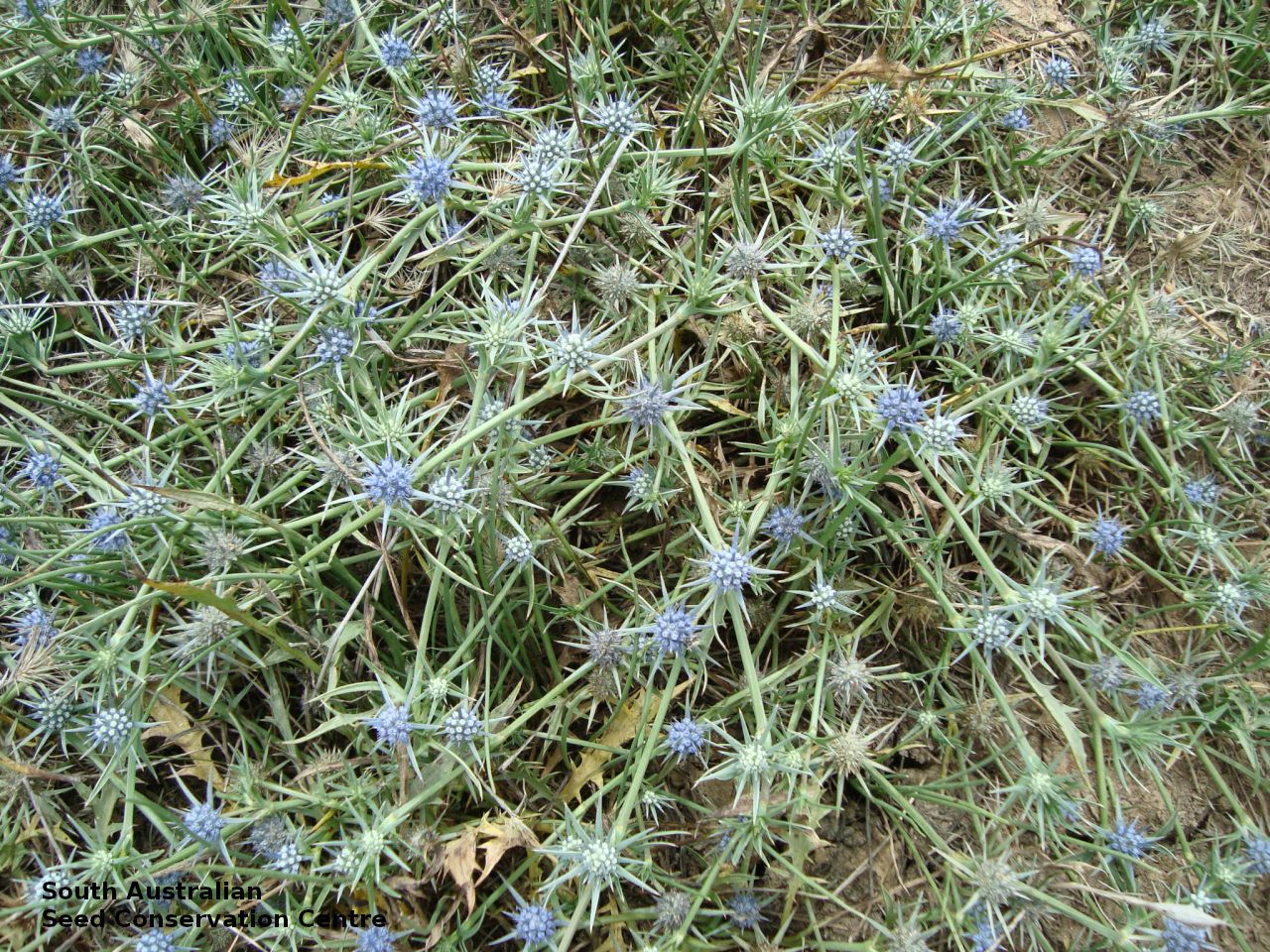
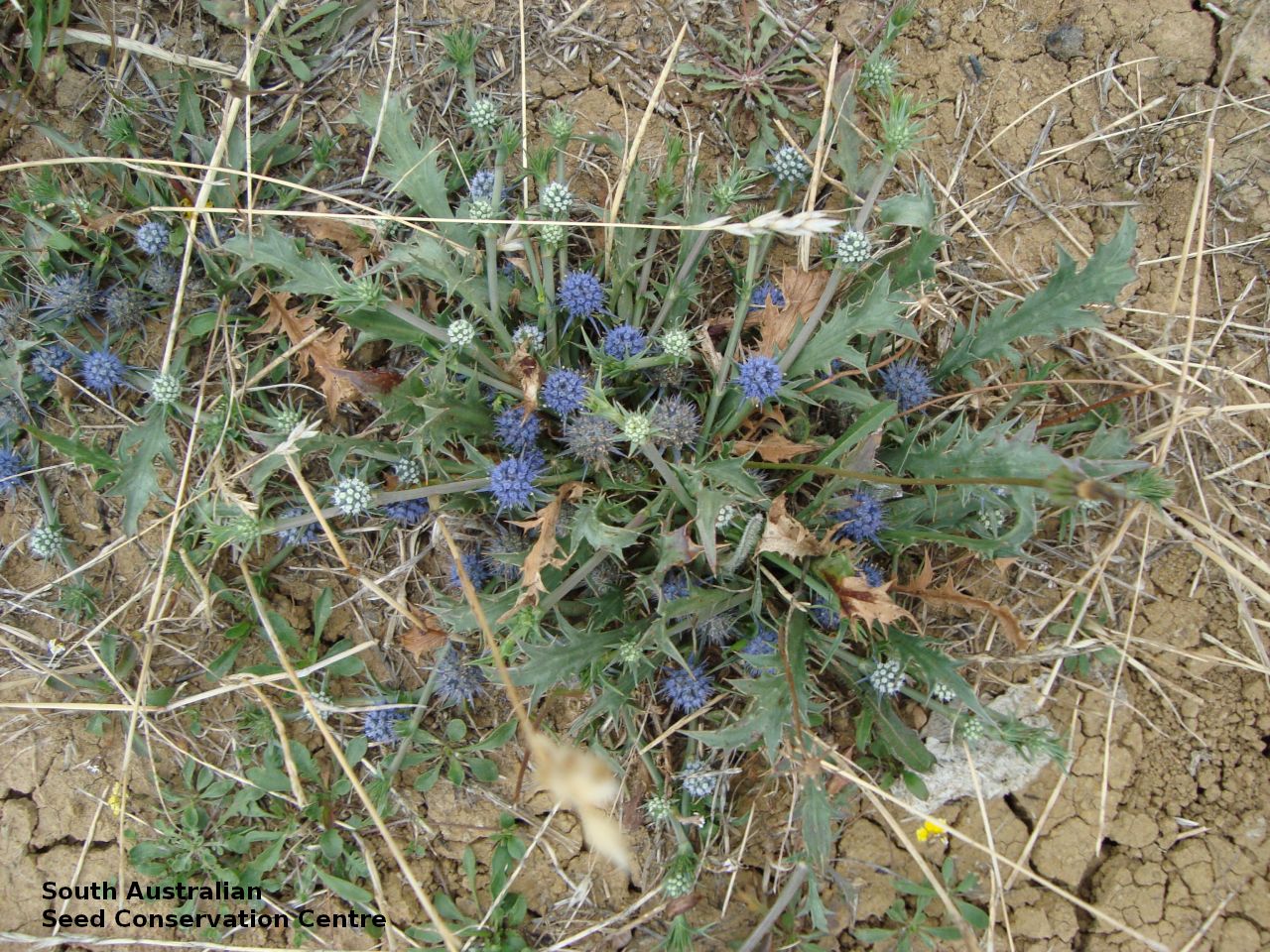
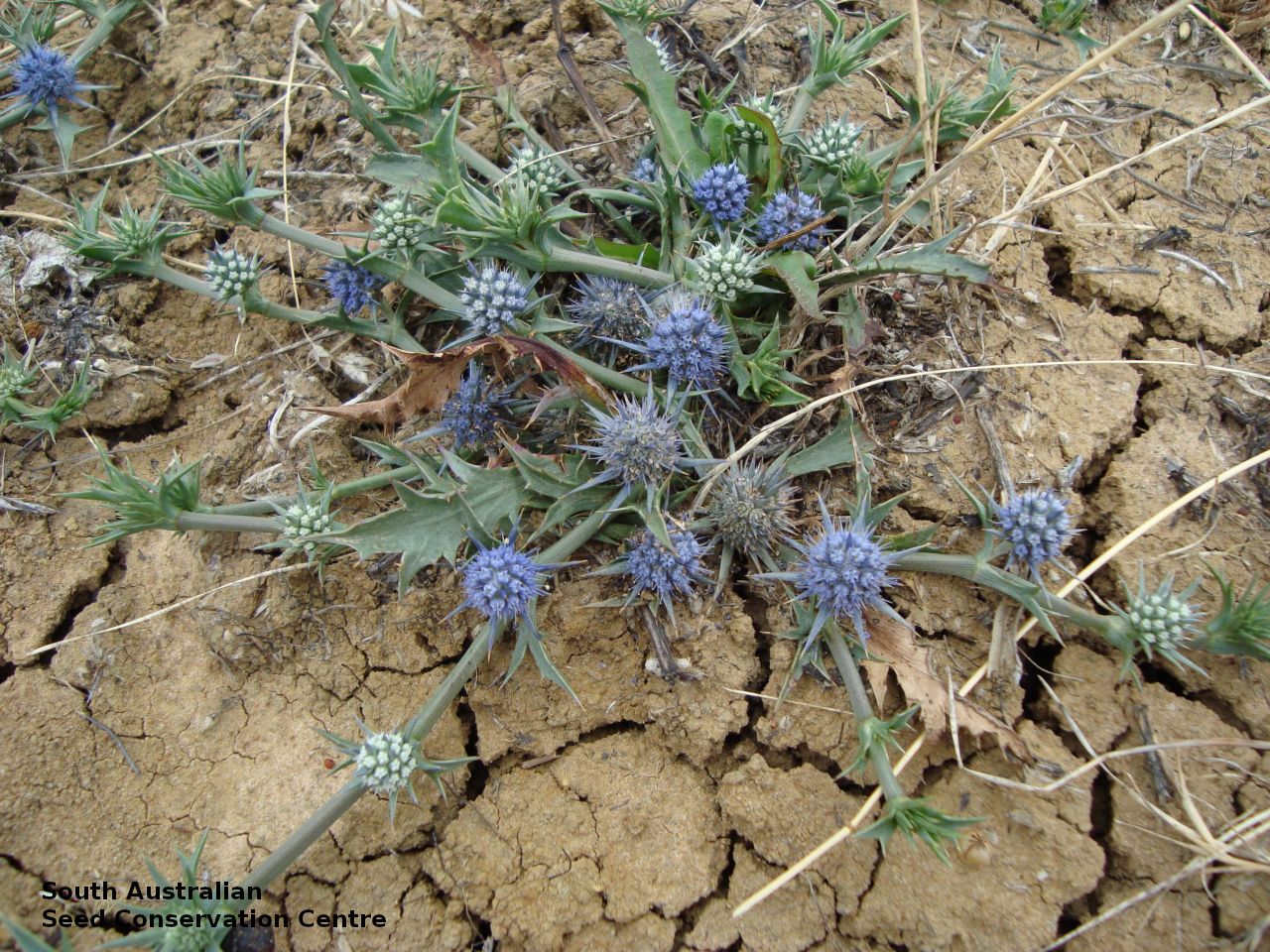
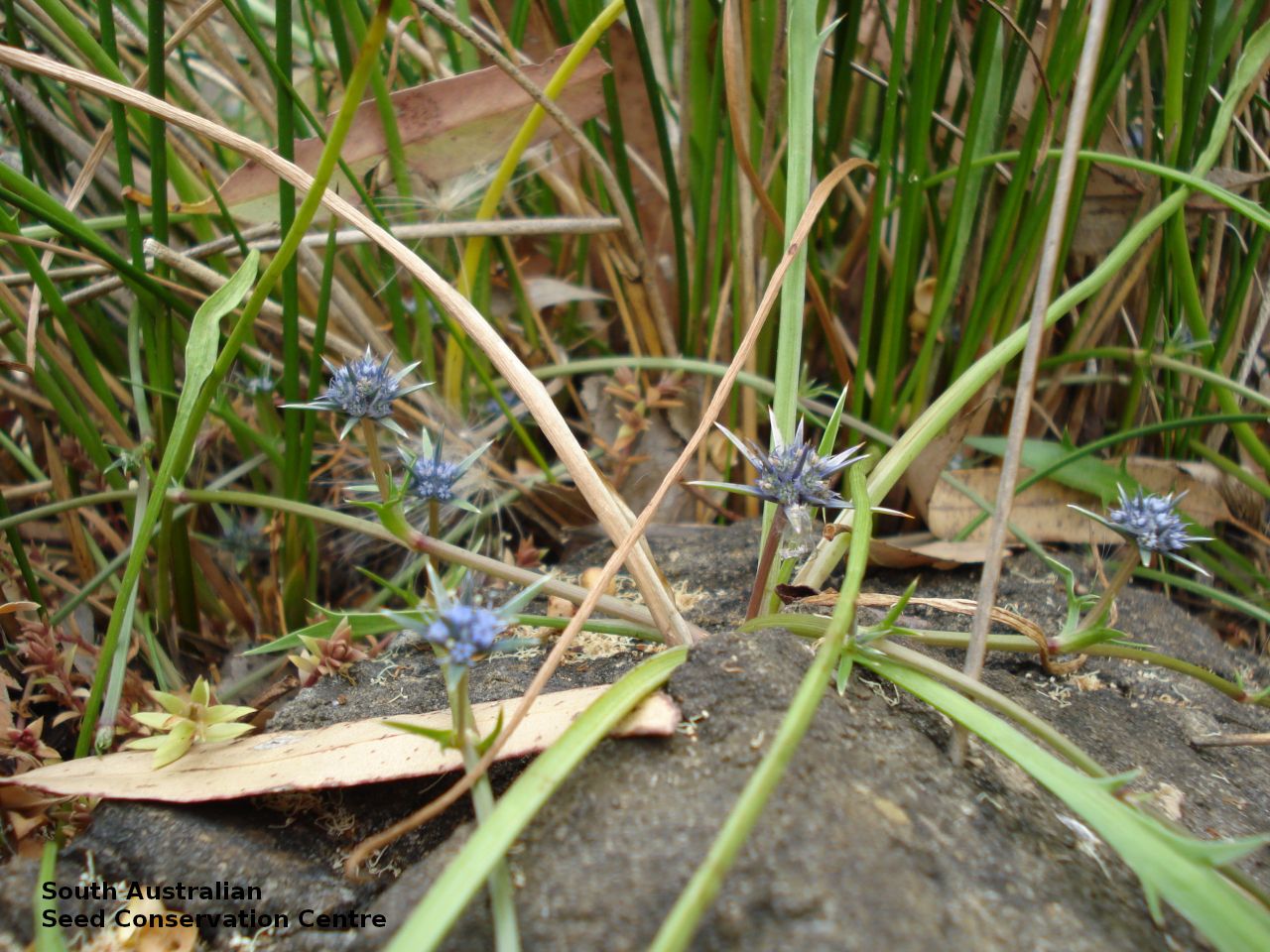
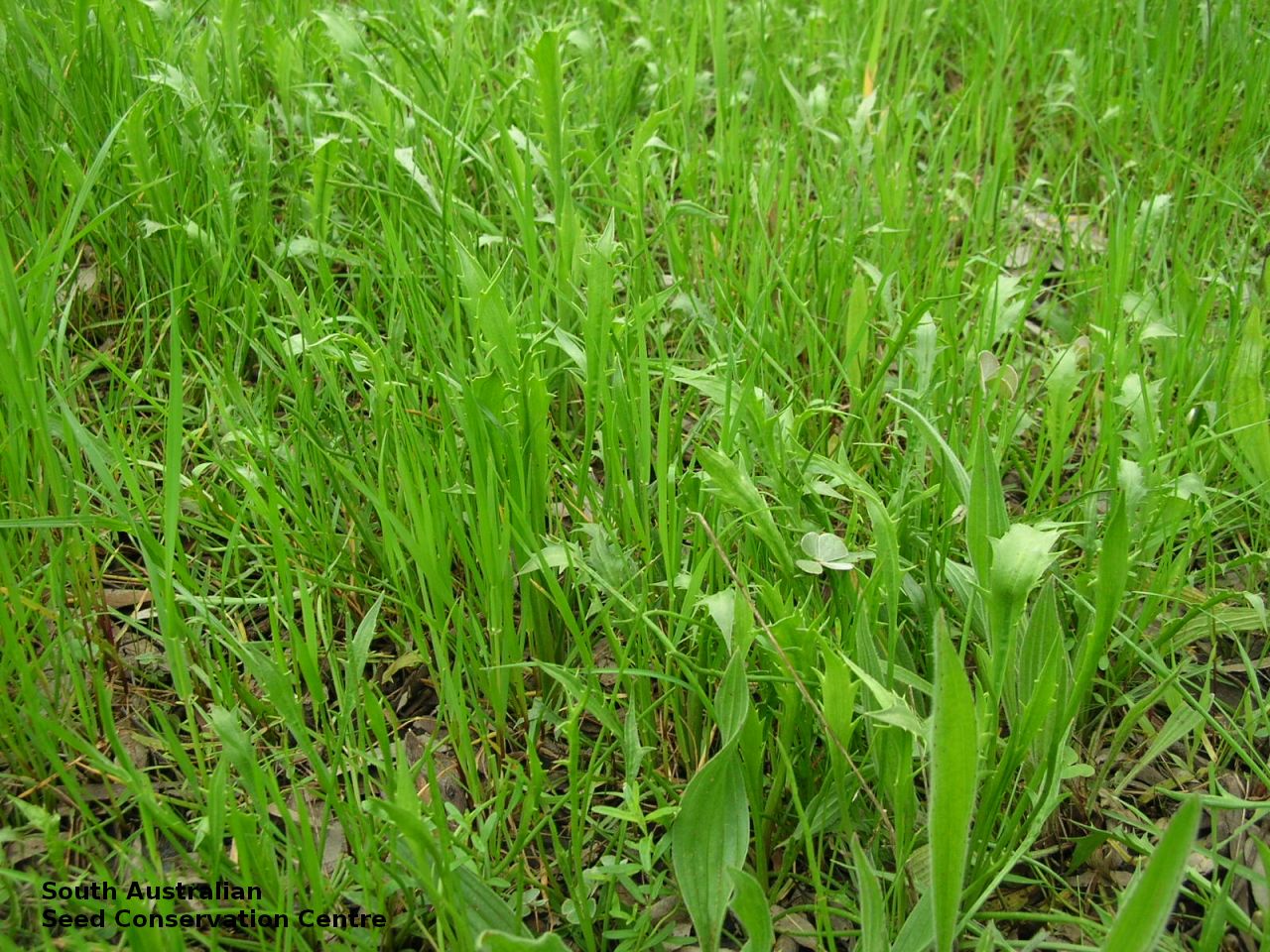
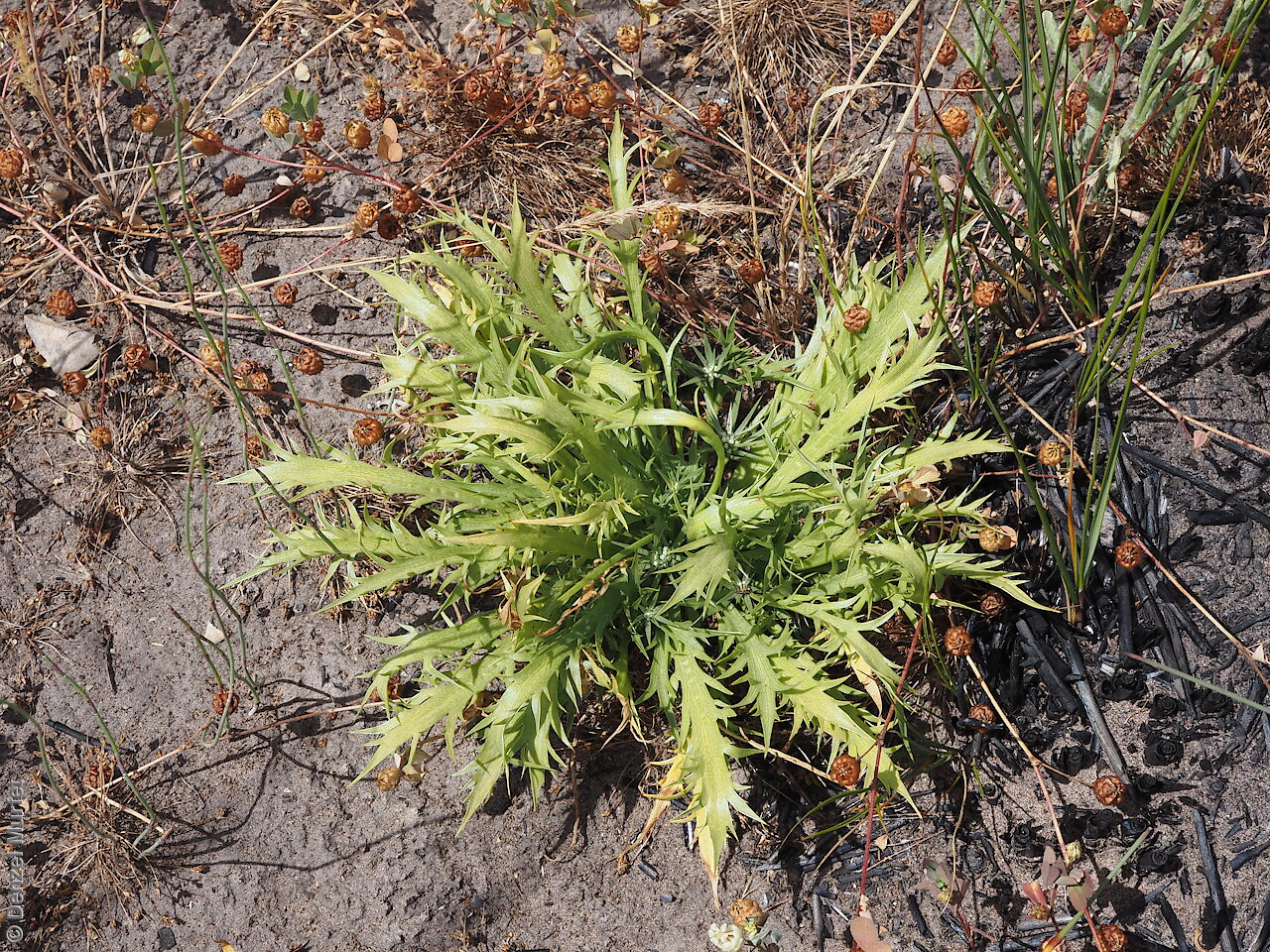
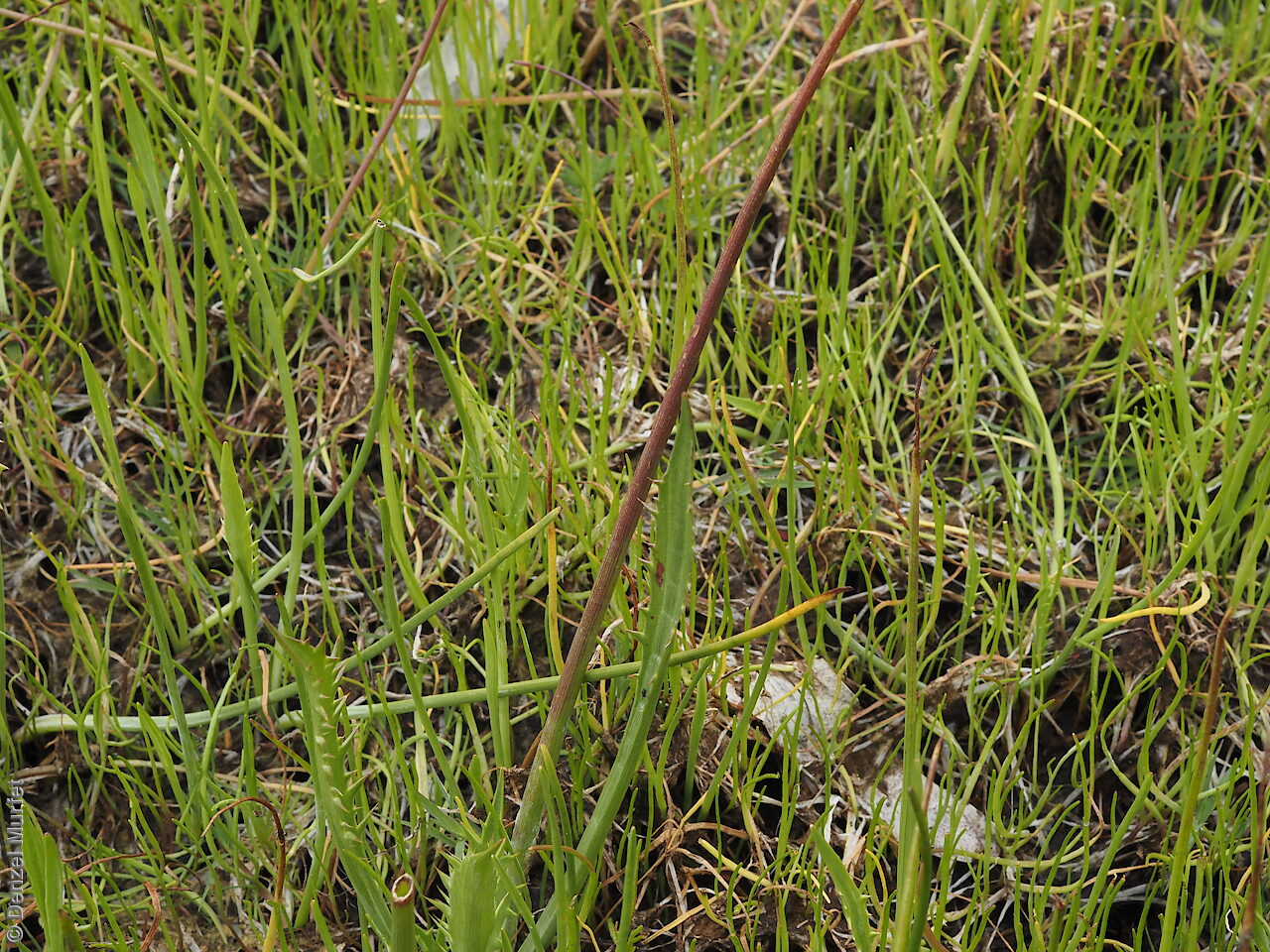

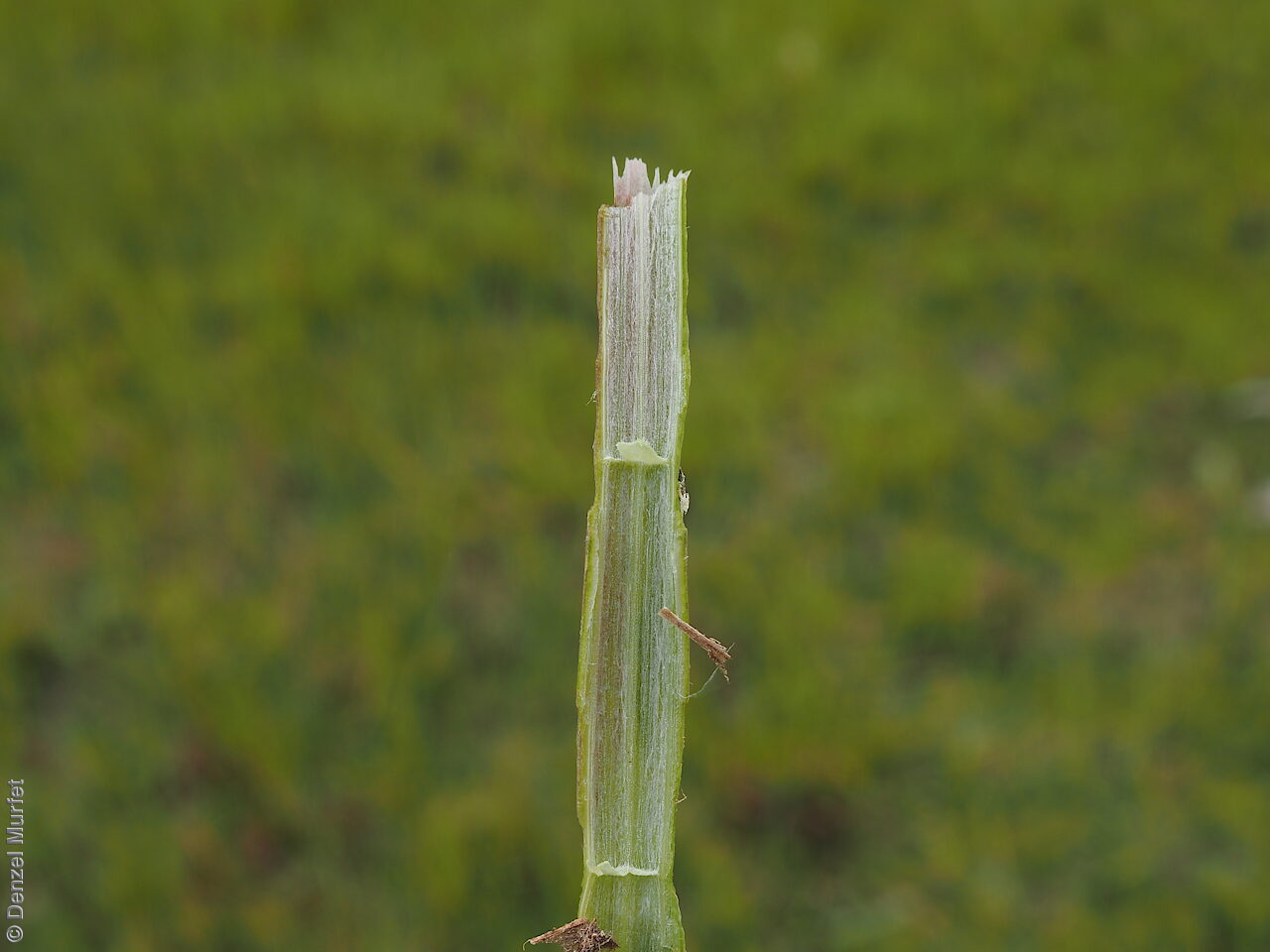
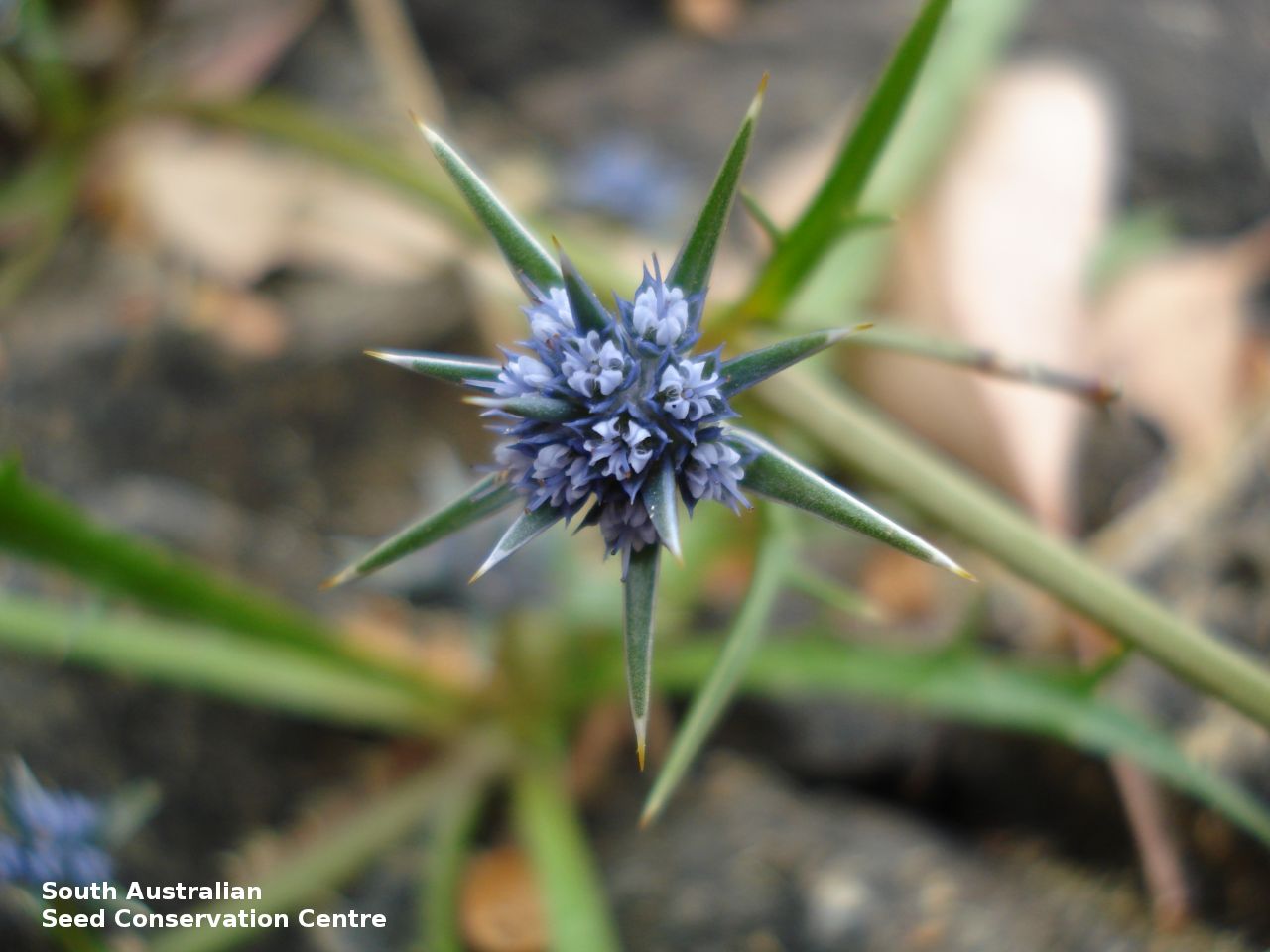
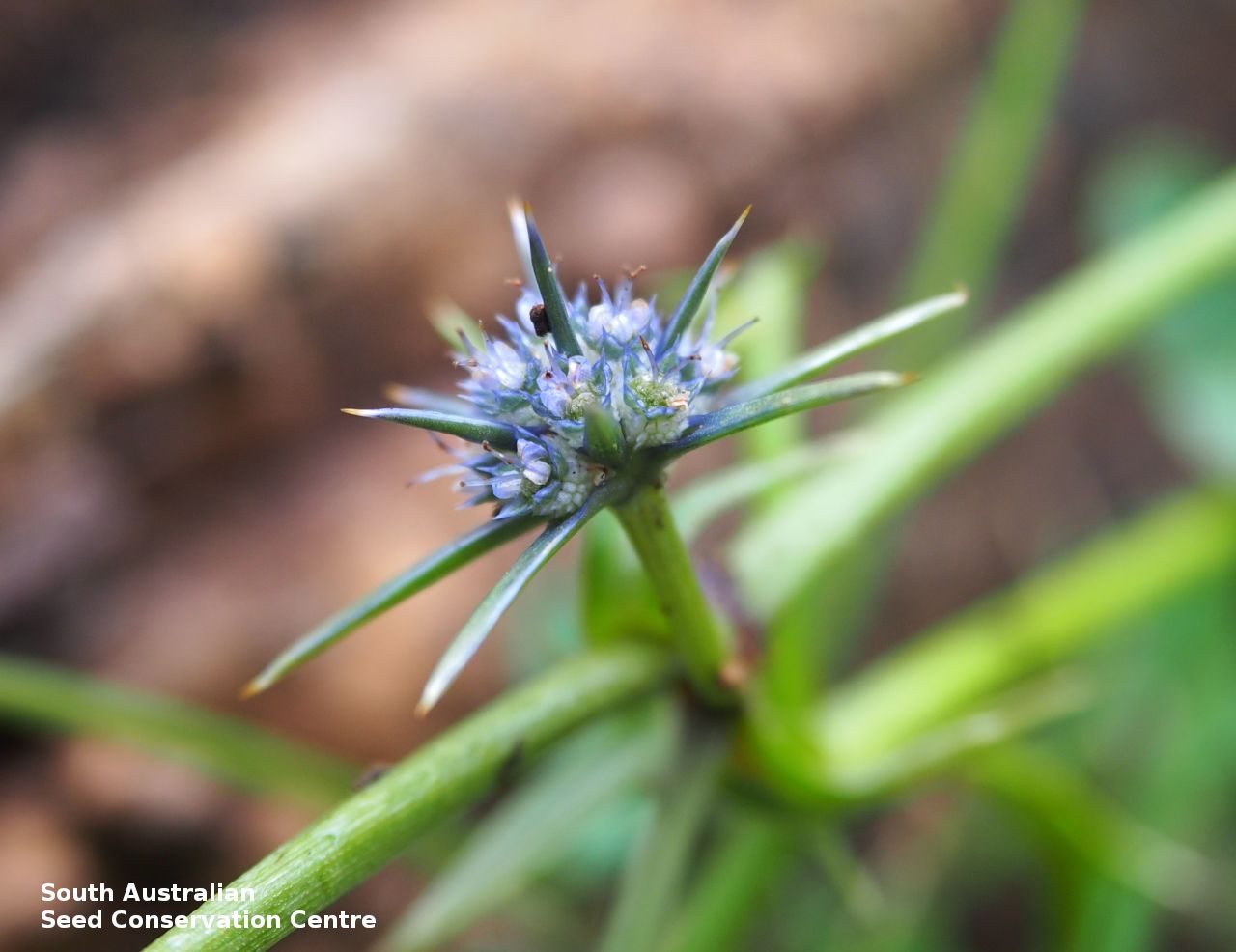
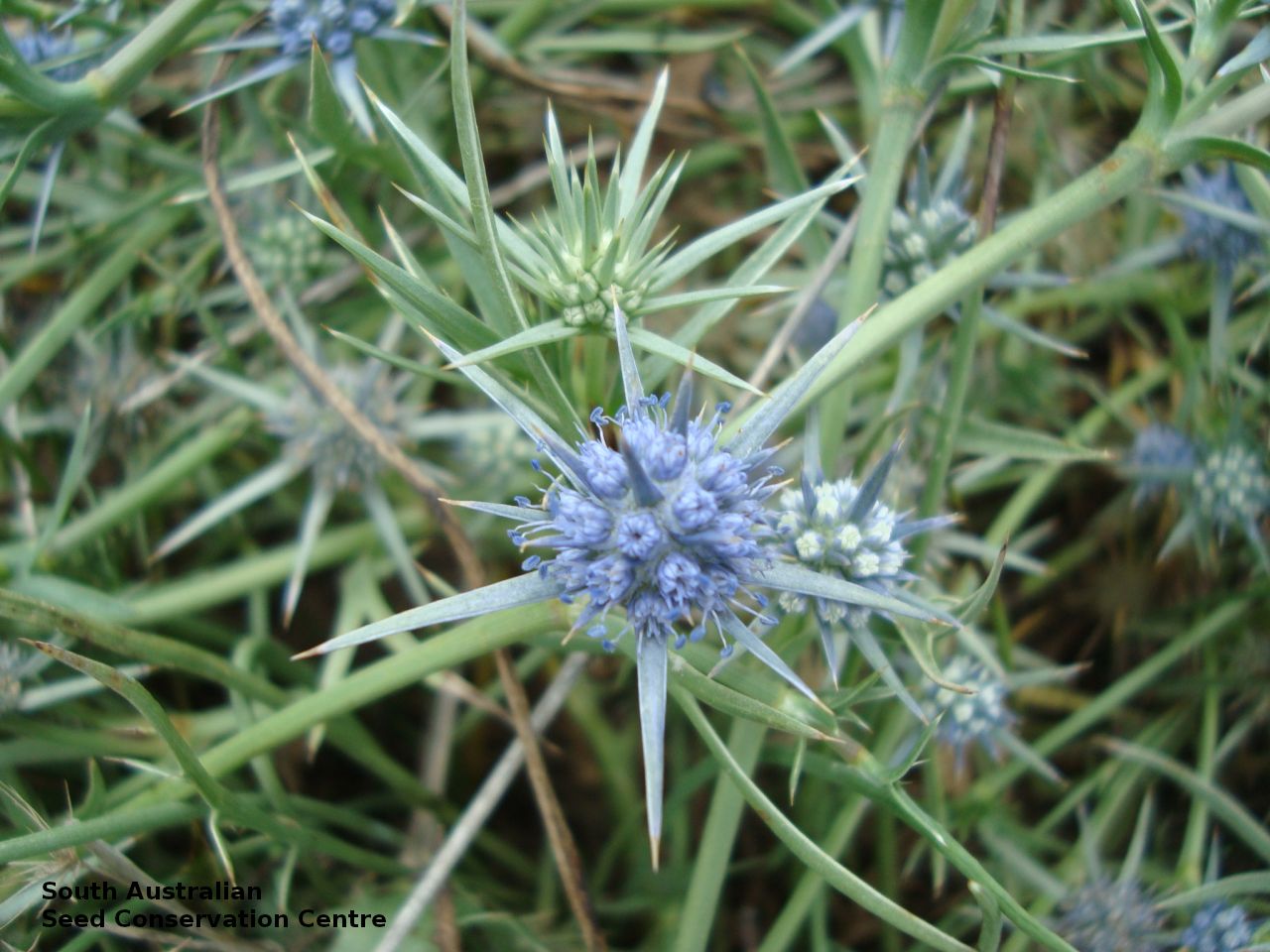
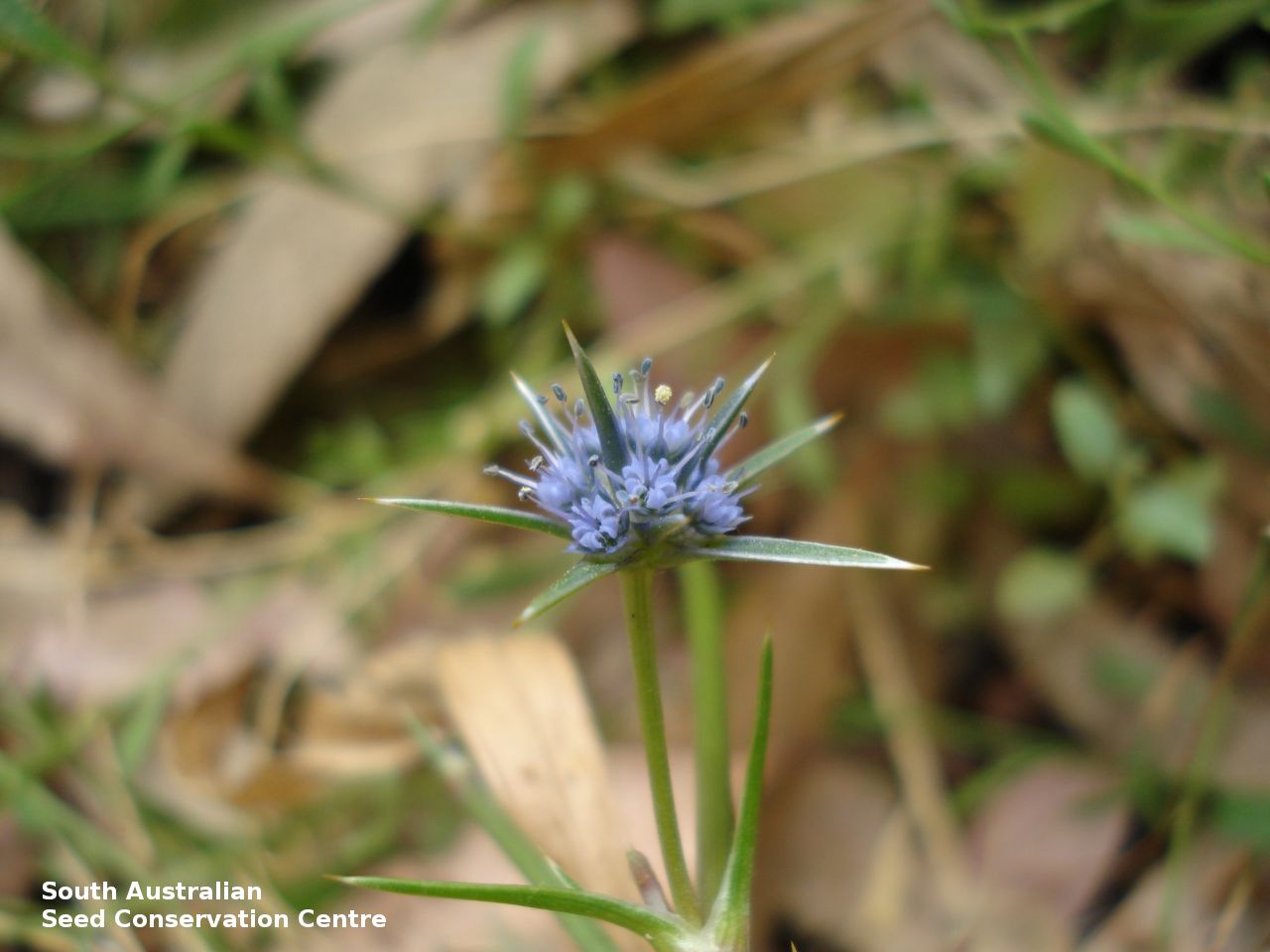
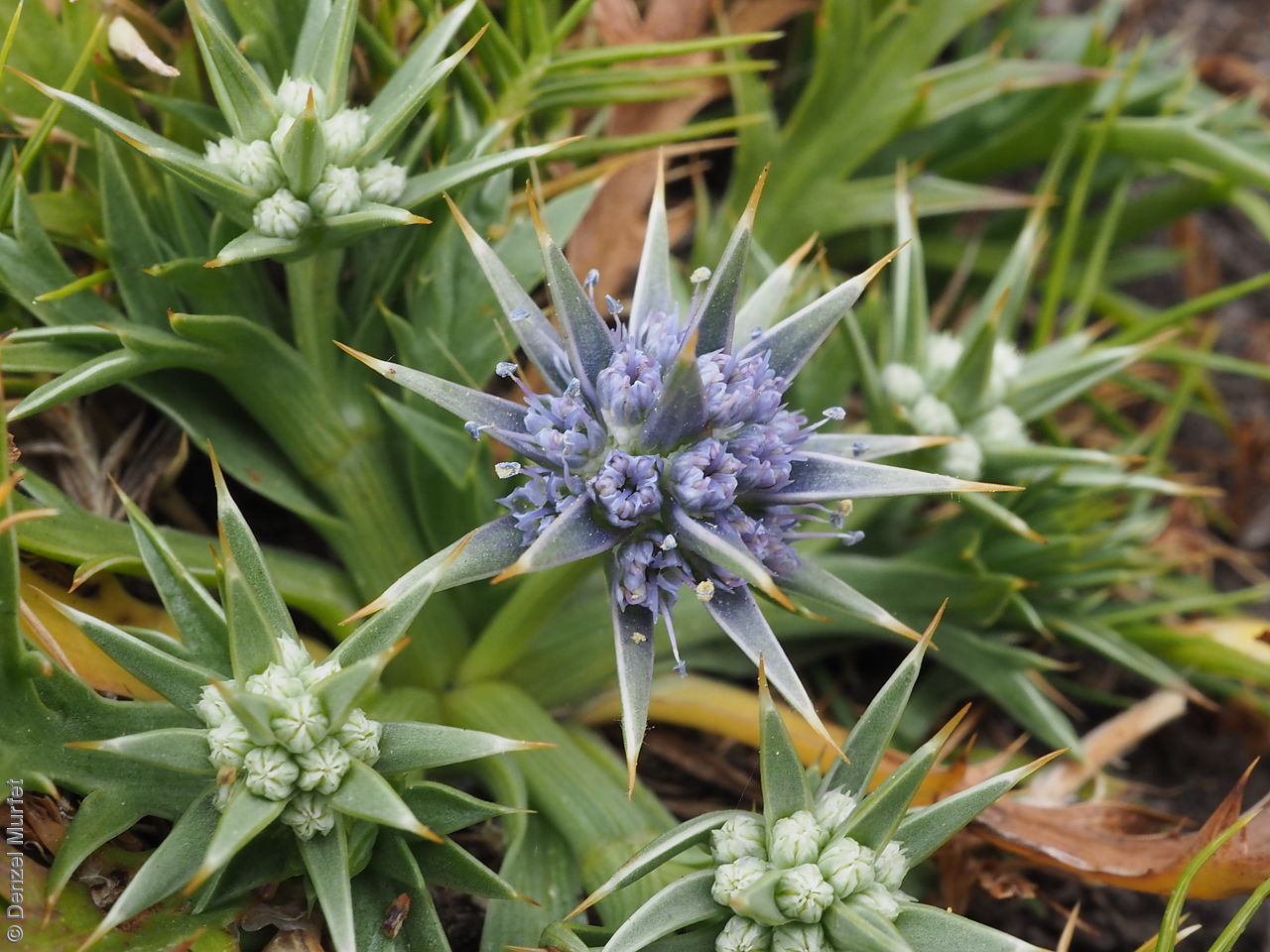
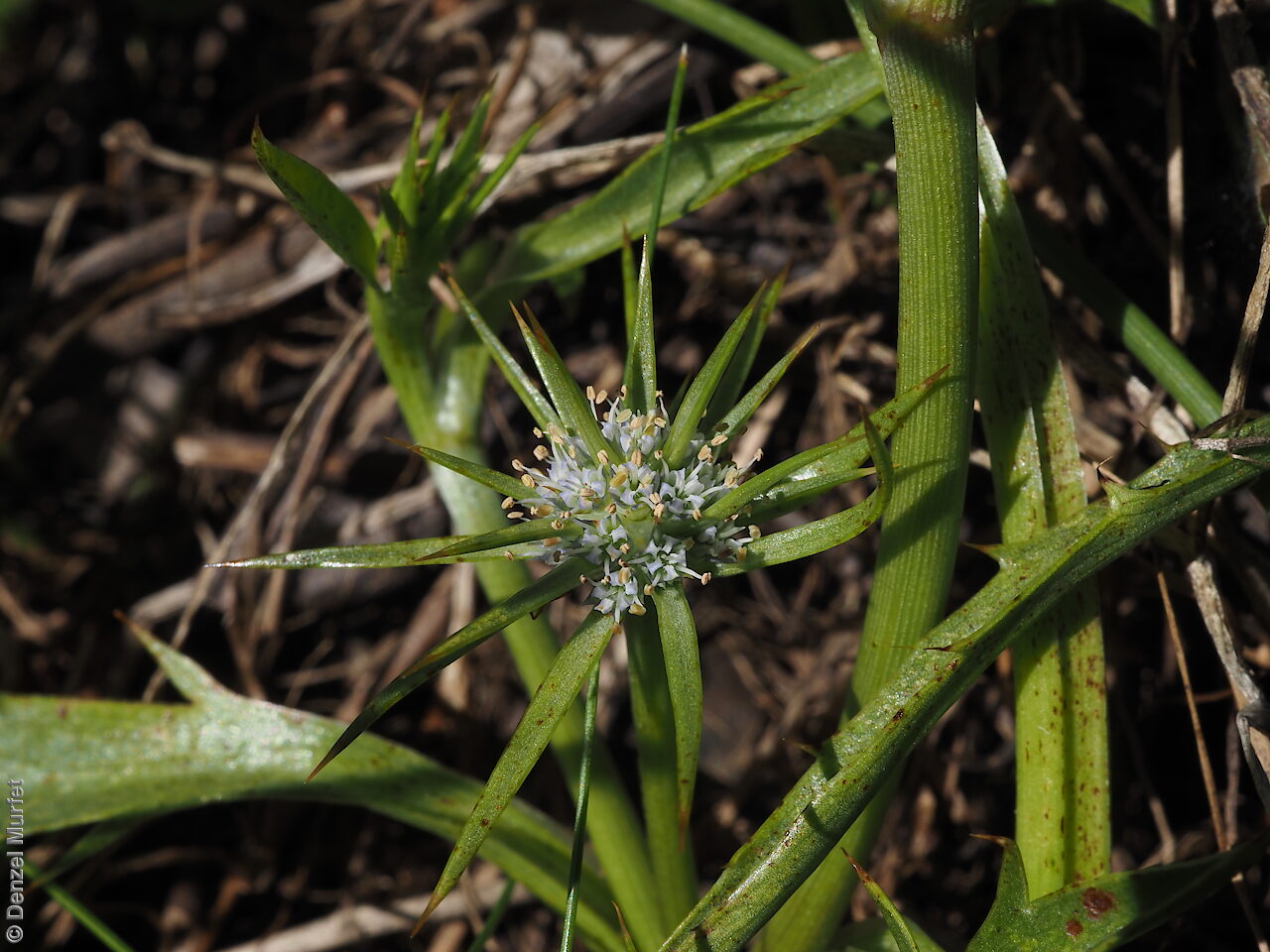
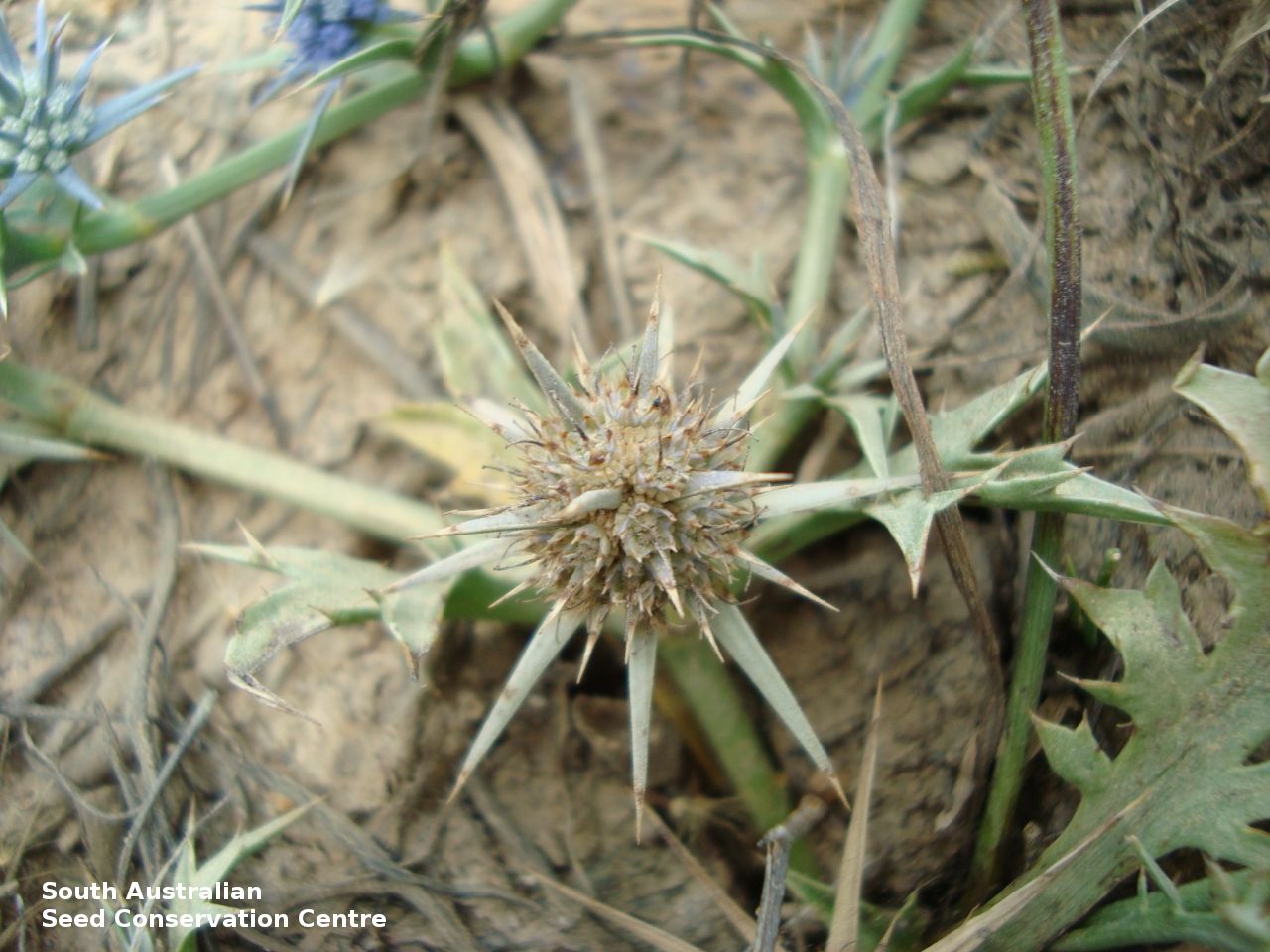
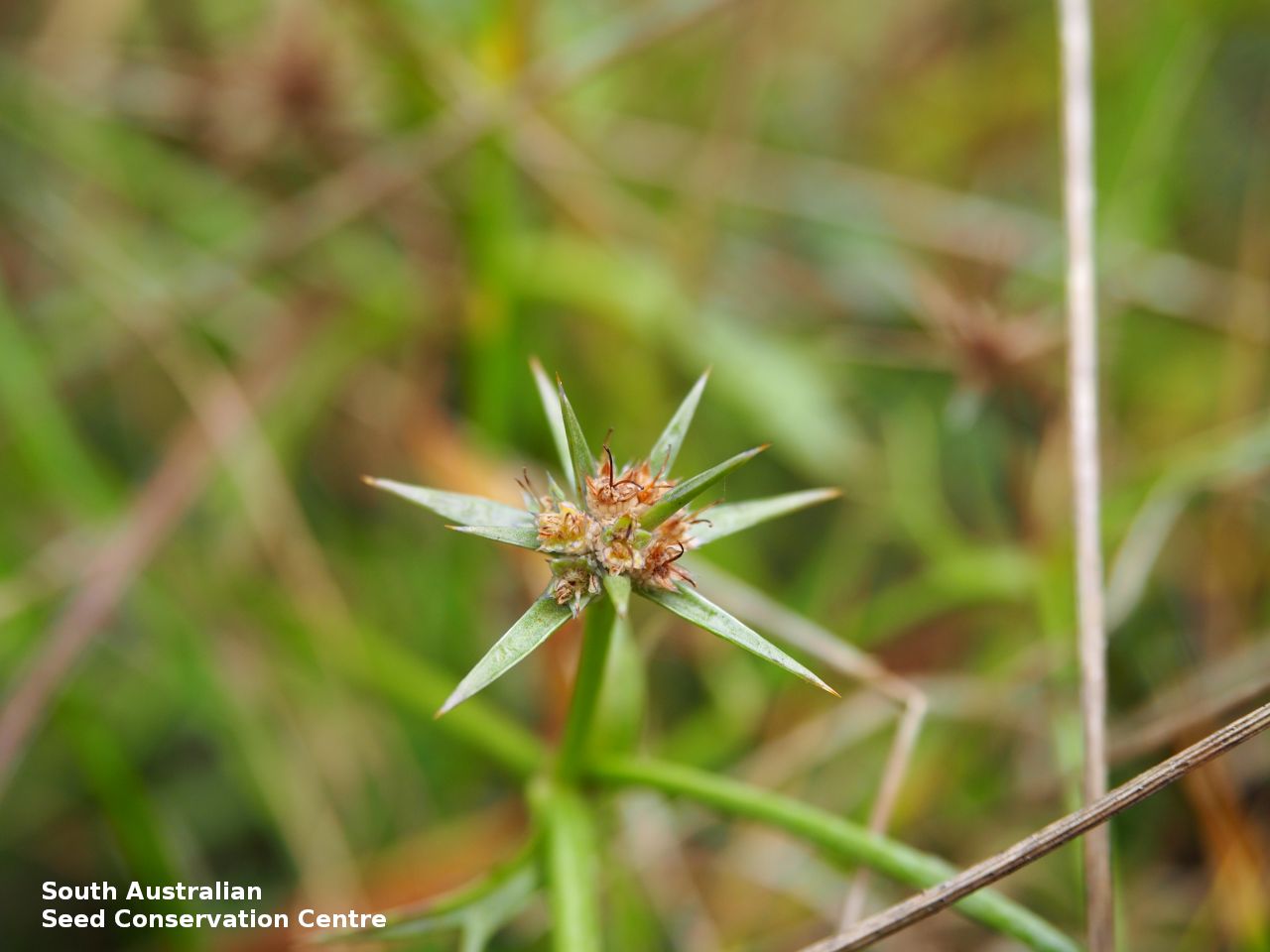
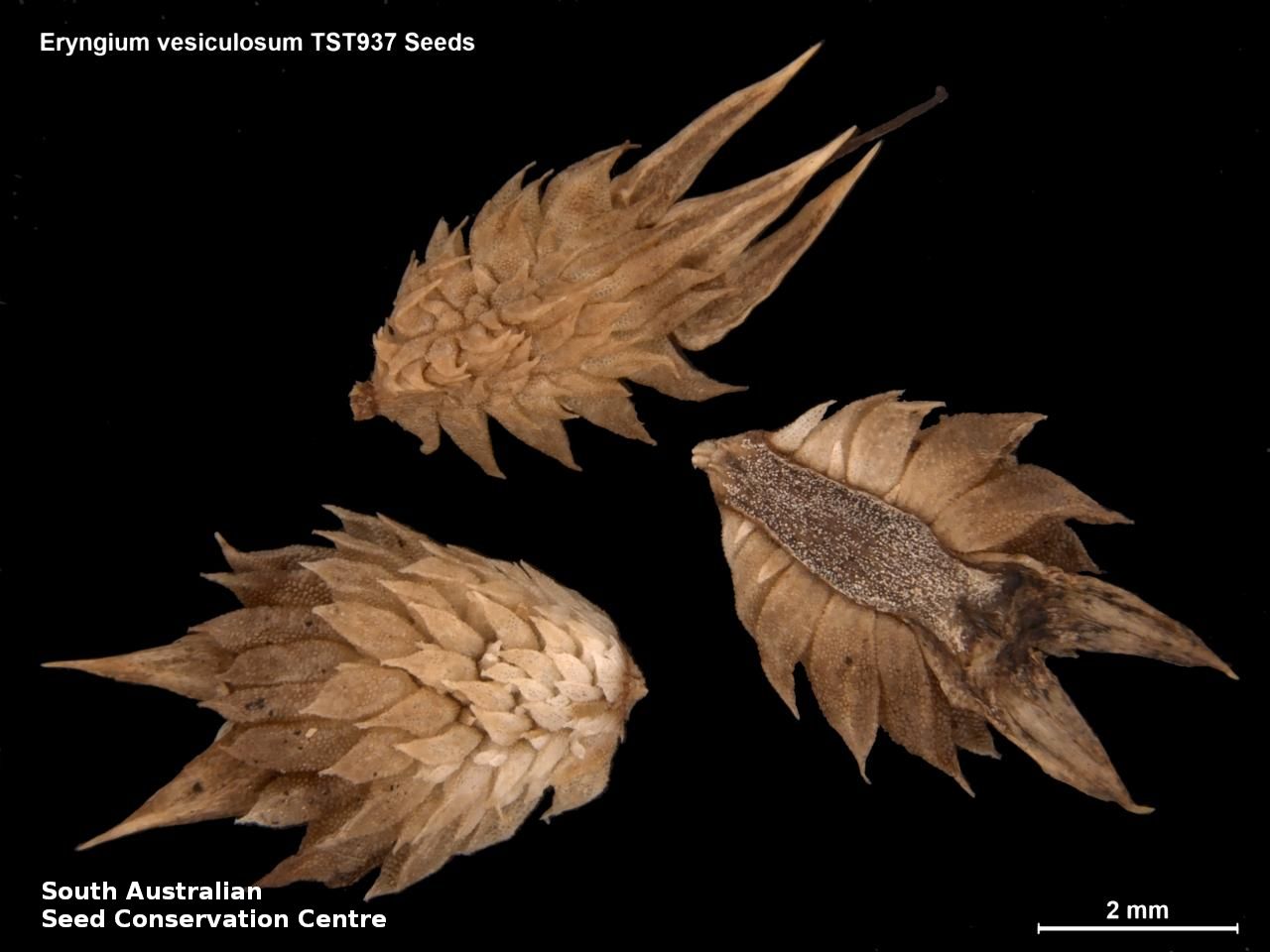
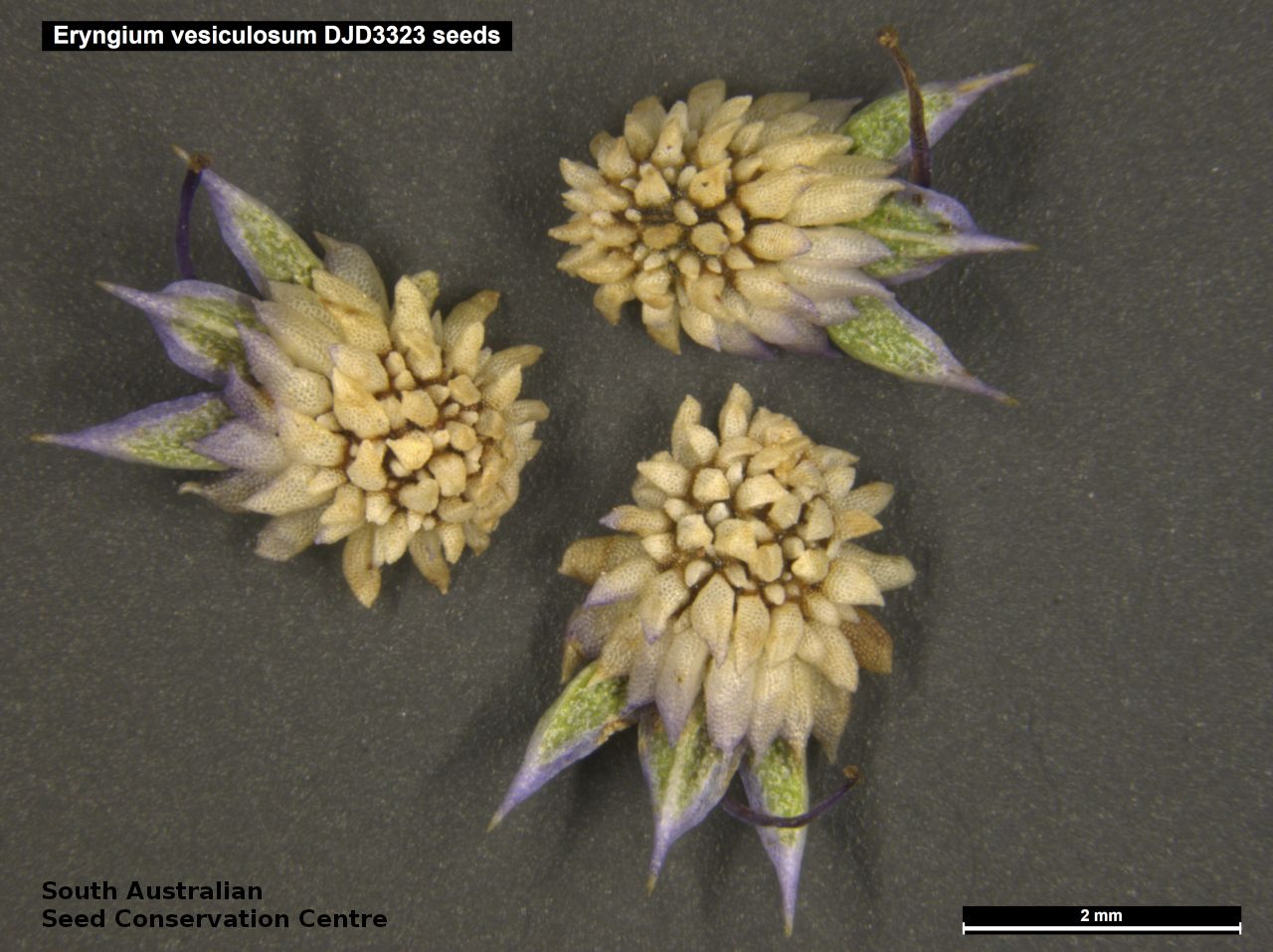
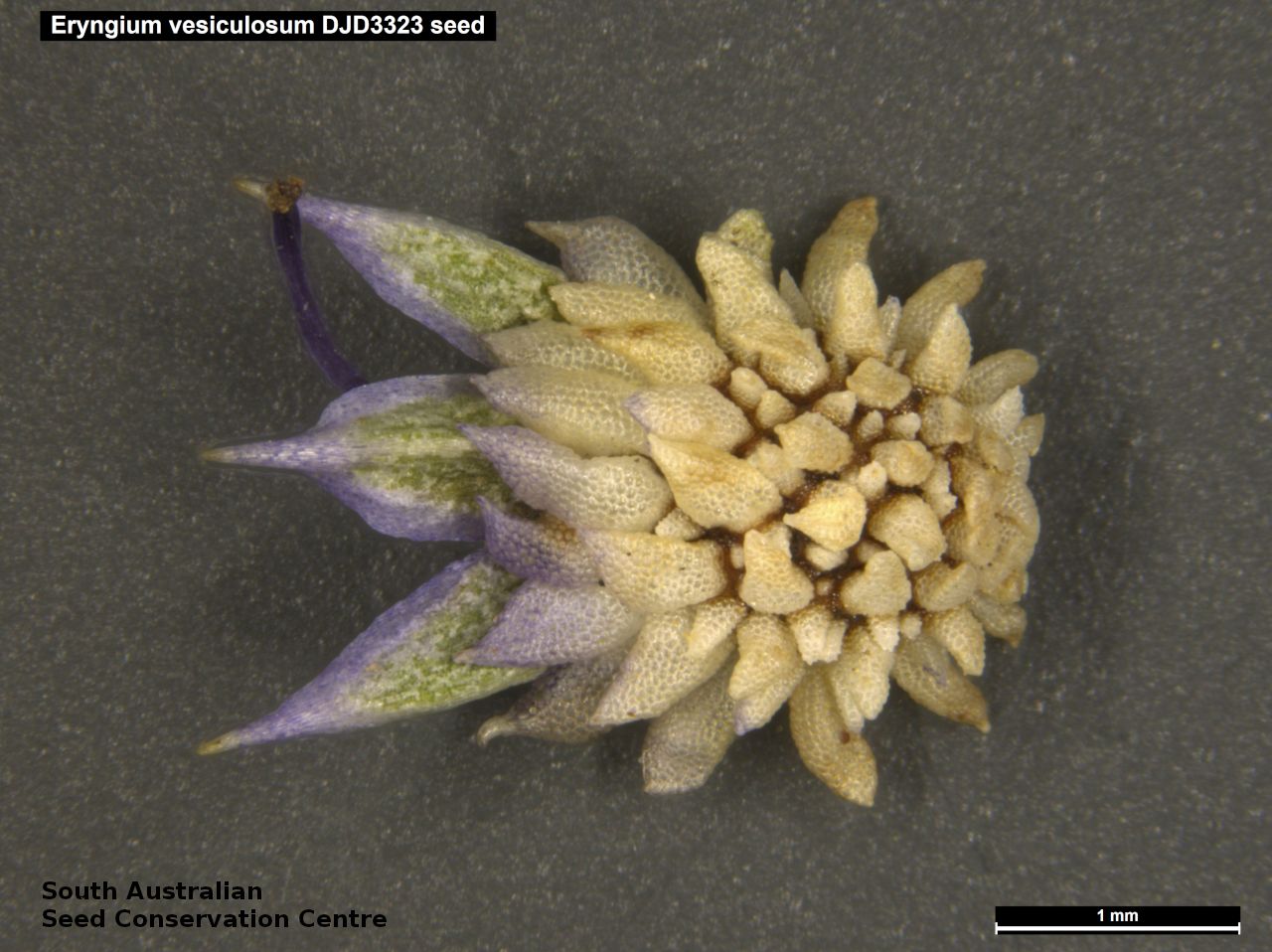
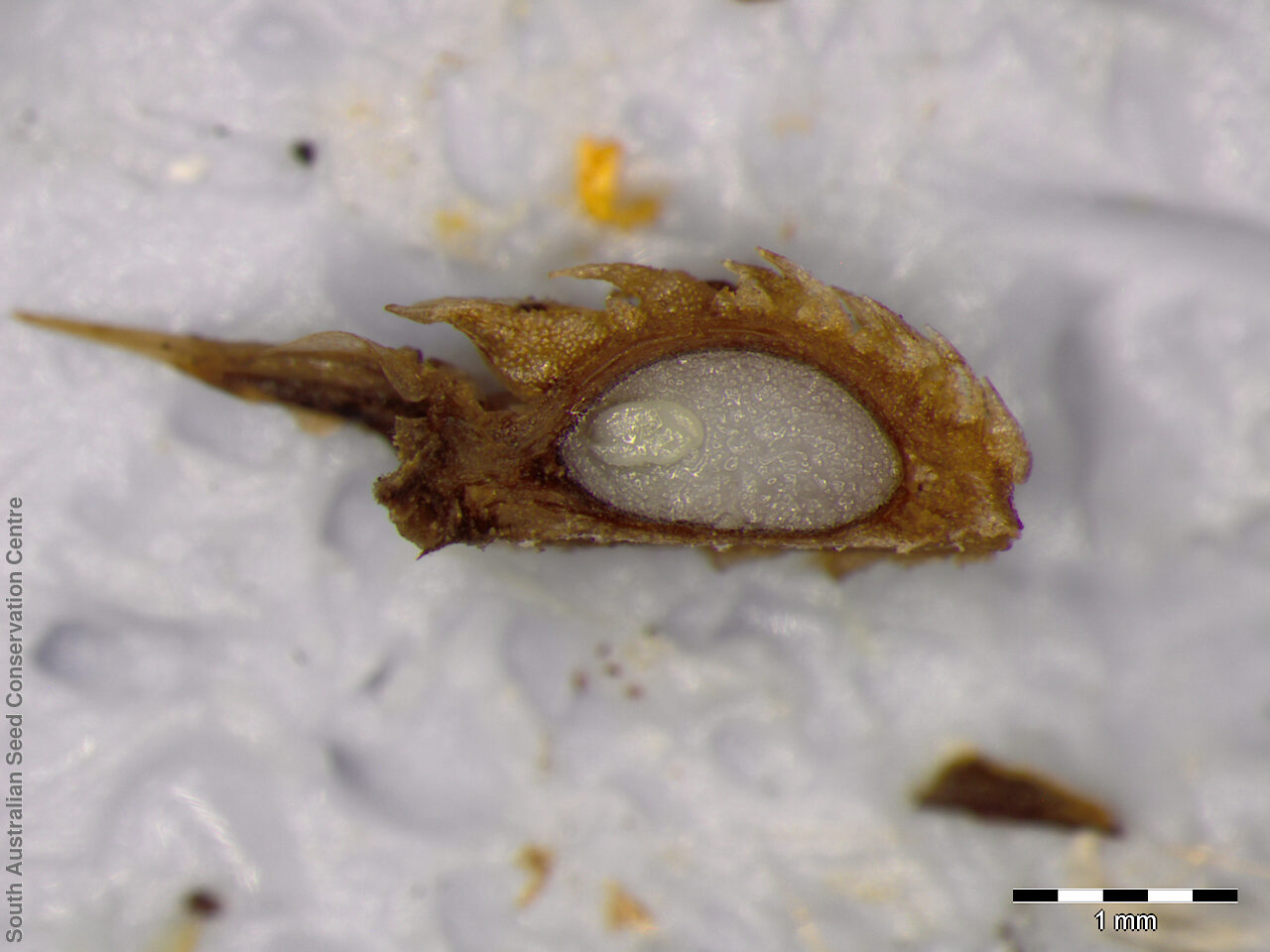
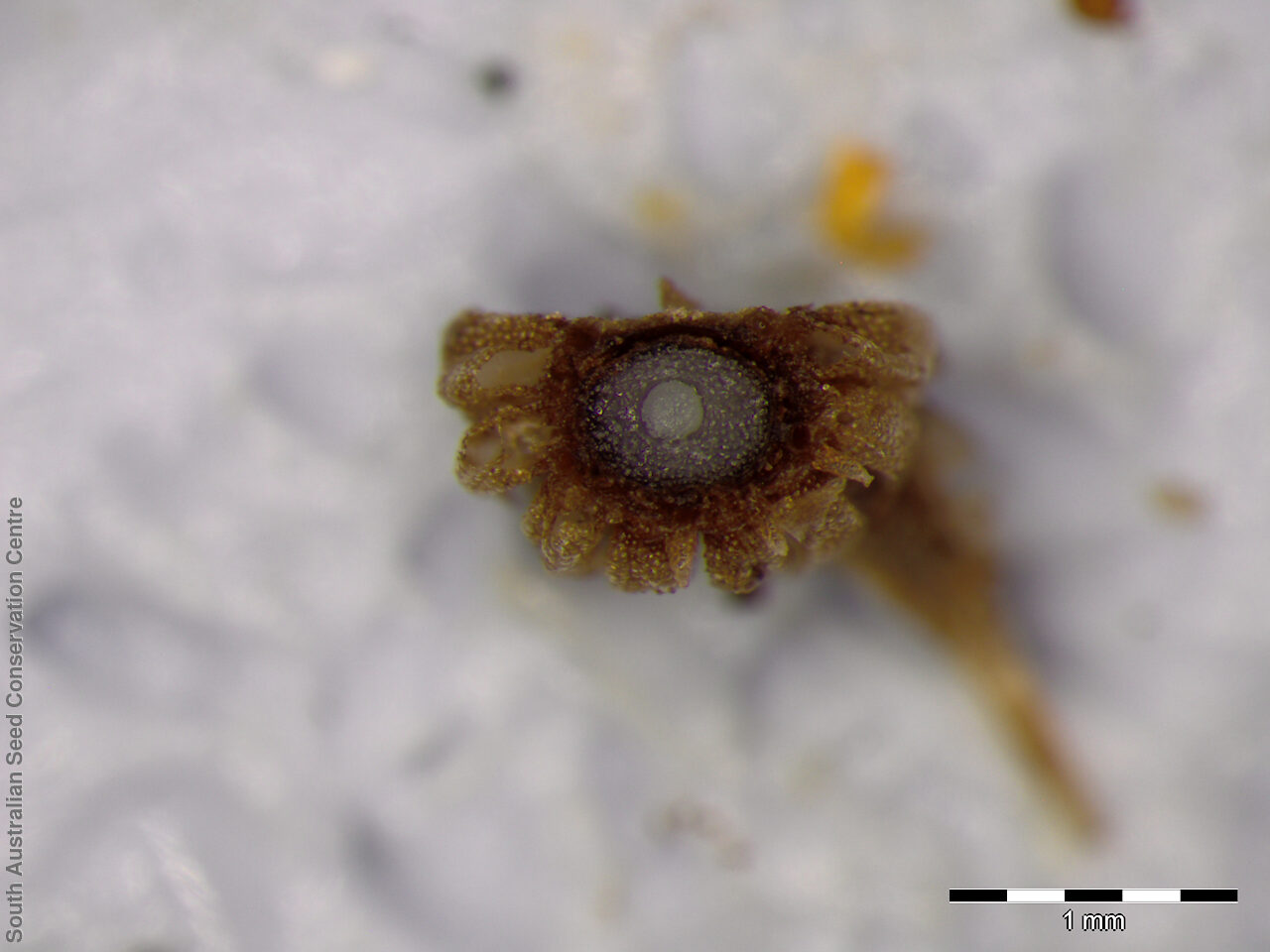
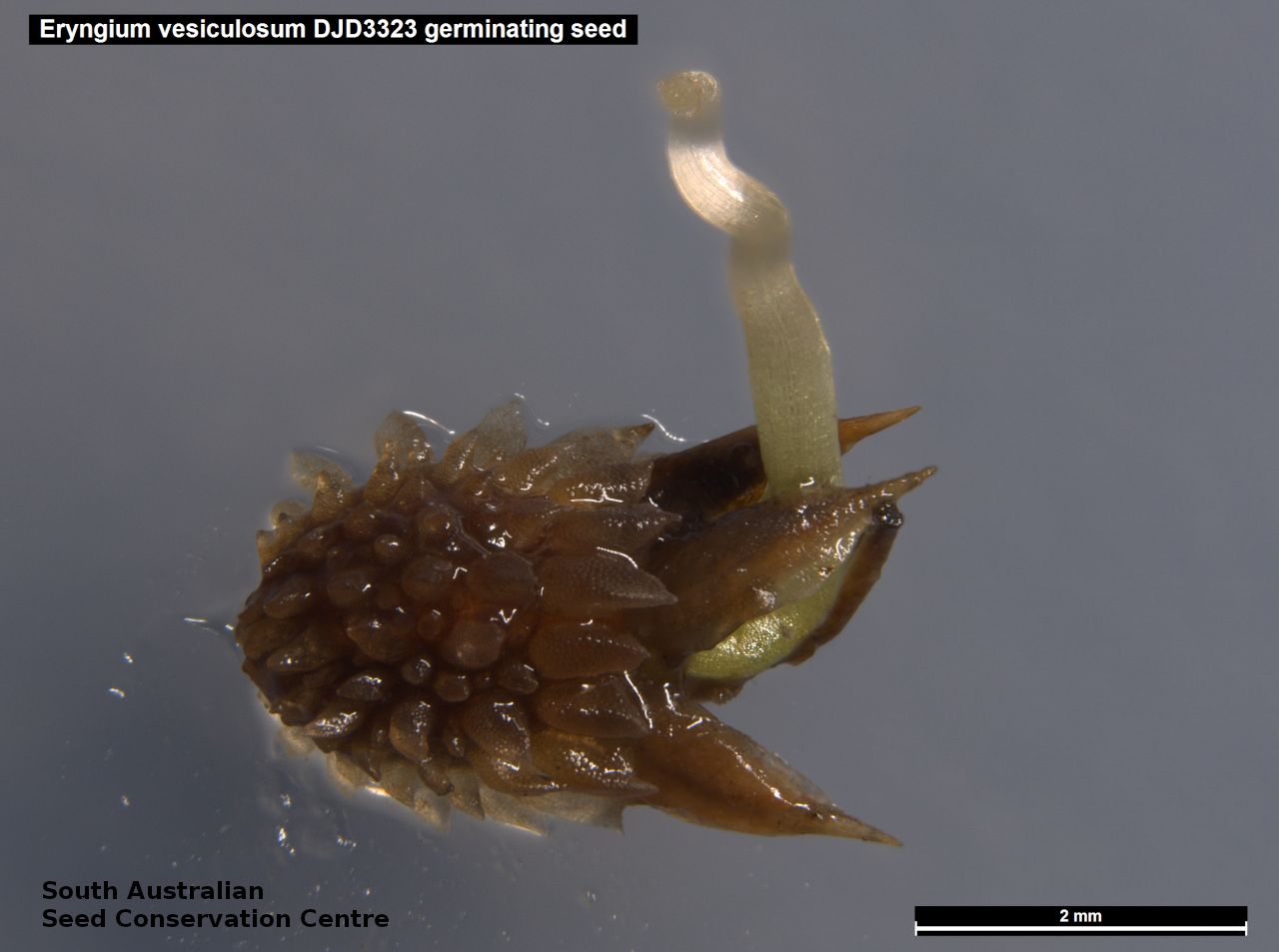

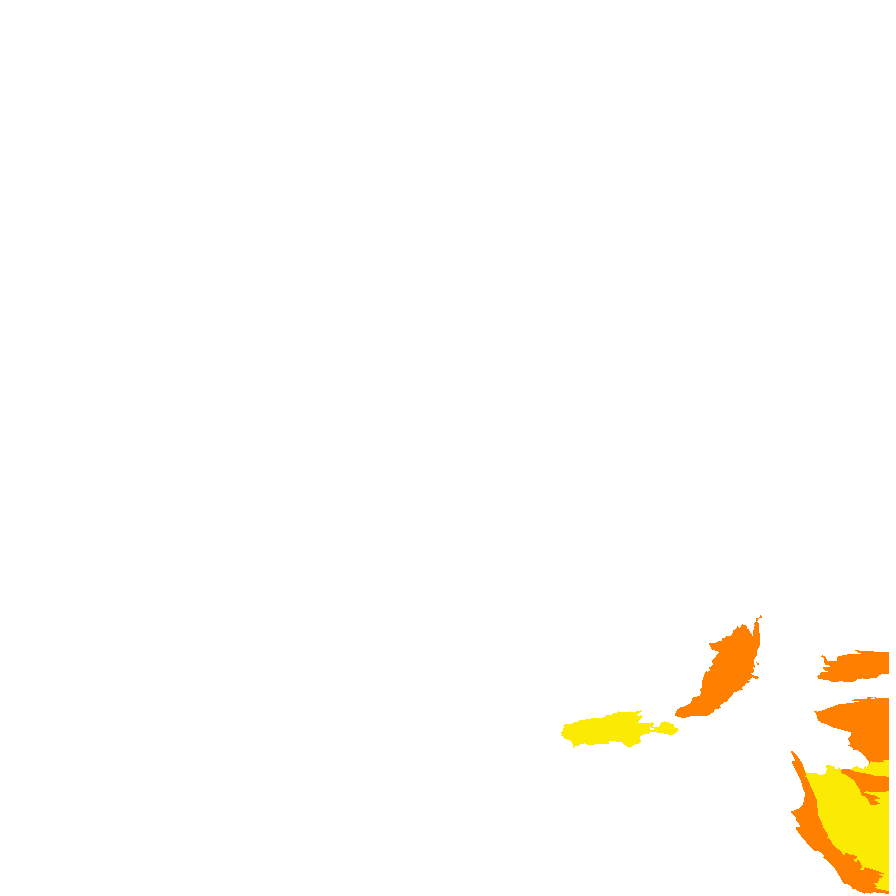
Botanical art
Common names
Prostrate Blue Devil
Prickfoot
Etymology
Eryngium from the Greco-Latin 'eryngion' meaning sea holly. May also be from the Greek 'eryngano' meaning to belch, as the plant was used as a remedy for flatulence. Vesiculosum from the Latin 'vesicula' meaning a bladder; referring to the bladder-like scales covering the fruit.
Distribution and status
Found scattered in South Australia, from the Lake Eyre region to the lower South-east, growing in sandy flats in low-lying damp areas. Also found in Queensland, New South Wales, Victoria and Tasmania. Native. Rare in South Australia. Rare in Queensland. Common in the other states.
Herbarium regions: North Western, Lake Eyre, Northern Lofty, Southern Lofty, Kangaroo Island, South Eastern, Green Adelaide
NRM regions: Adelaide and Mount Lofty Ranges, Alinytjara Wilurara, Kangaroo Island, South Australian Arid Lands, South East
AVH map: SA distribution map (external link)
Plant description
Short-lived perennial herb with long, prostrate branches to 30 cm long. Basal leaves in a rosette, oblanceolate or oblong, to 15 cm long and 1.5 cm wide, with coarse spreading spiny teeth. Flower-head round or ovoid at terminal of stalk from basal rosette and nodes of the branches, with white to blue flowers. Flowering between December and March. Fruits are spiky, brown ovoid fruit-head. Seeds are brown ovoid seeds to 6 mm long and 4 mm wide, covered in bladder-like hairs and 2-3 spikes at one end. Seed embryo type is linear under-developed.
Seed collection and propagation
Collect seeds between February and May. Collect heads that are drying and turning a straw colour. Be careful as the plant can be very prickly. Collect more than what is required as not all seeds will be viable. Place the heads in a tray and leave to dry for two weeks. Then rub the heads with a rubber bung and not with your hands as the heads are prickly. Then use a sieve to separate the unwanted material. Use an aspirator (if available) to remove the lighter non-viable seeds from the heavy viable seeds. Store the seeds with a desiccant such as dried silica beads or dry rice, in an air tight container in a cool and dry place. From three collections, the seed viability were low to high, ranging from 30% to 80%. Seeds are non-dormant, viable seed should germinate readily.
| Location | No. of seeds (weight grams) | Number of plants | Date collected | Collection number Collection location | Date stored | % Viability | Storage temperature |
|---|---|---|---|---|---|---|---|
| BGA MSB | 1,000 (0.98 g) 1,500 (1.47 g) | 50 | 13-Feb-2006 | HPV3019 South Eastern | 9-Aug-2006 | 30% | -18°C |
| BGA | 950 (1.54 g) | 13-May-2009 | DJD1462 Southern Lofty | 20-Jul-2009 | -18°C | ||
| BGA | 2,700 (3.34 g) | 25 | 29-Apr-2010 | TST937 South Eastern | 1-Jun-2010 | 40% | -18°C |
| BGA | 4,400 (5.8 g) | 50+ | 29-Mar-2011 | DJD2181 Southern Lofty | 1-Jan-2012 | 80% | +5°C, -18°C |
| BGA | 4,700 (4.36 g) | 17-Jun-2015 | Chalks Creek Southern Lofty | 1-Jan-2016 | 75% | -18°C, -80°C | |
| BGA | 1,400 (1.3 g) | 30 | 16-May-2016 | DJD3323 Southern Lofty | 2-May-2017 | 35% | -18°C |
| BGA | 9,400 (13.68 g) | 20+ | 1-May-2019 | DJD2181 Southern Lofty | 24-Jun-2020 | 70% | -18°C, -80°C |
Number of plants: This is the number of plants from which the seeds were collected.
Collection location: The Herbarium of South Australia's region name.
% Viability: Percentage of filled healthy seeds determined by a cut test or x-ray.